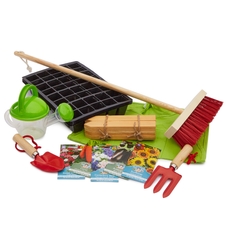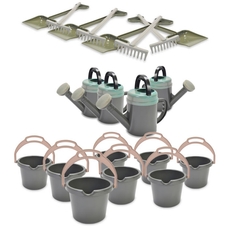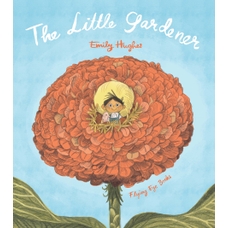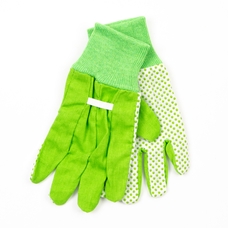Winter Seasonal Growing Kit by Hope Education
Winter Seasonal Growing Kit by Hope Education
Product code: GP057988
Product Description
Embark on an exploration of the natural world with our Winter Nature Kit, developed by Hope Education. This kit includes four captivating, hands-on lessons, designed to nurture a love for nature in students.
Featuring four engaging activities, perfect to do during the winter. The kit is a green thumb guarantee for your classroom. Each activity not only sparks curiosity but also fosters a deep connection with the environment. Infused with educational value and entertainment, these experiences effortlessly transform traditional teaching into an unforgettable immersive journey of discovery.
Aligned with the national curriculum objectives, this kit is a comprehensive resource that equips educators with everything (apart from a few basics) they need to seamlessly integrate nature-based learning into their classroom. From detailed lesson plans to worksheets, we've taken care of the essentials, allowing you to focus on cultivating a vibrant, interactive learning environment.
Unleash the wonders of the great outdoors and watch as your students blossom with newfound knowledge and enthusiasm for the world around them. The Winter Nature Kit is your passport to an educational adventure like no other.
Activities include:
- Animal inspired plant pots
- Dead, alive and inanimate sorting activity
- Growing broad beans
- Sprouting mung beans
What’s in the box:
- Lesson plans x 4
- Dead, alive and inanimate sorting cards
- Mung beans
- Seed sprouting container
- Broad beans
- Natural materials collage pots
- Classmates peel and stick wiggly eyes
- Coir pellets
- Broad bean growth tracking worksheet
- Mung bean sprouting tracking worksheet
- Gardening tasks ideas sheet
- Jumbo Gratnells tray and lid
Living things and their habitats
- Identify and describe the basic characteristics of living things, including plants, animals, and humans.
- Recognize and understand that some plants go dormant in winter as a way to protect themselves from freezing temperatures and conserve energy.
- Understand that certain objects may exhibit characteristics that give the appearance of being alive, but they are not truly alive.
- Classify objects into the categories of dead, alive, and inanimate based on their characteristics.
- Identify and describe the basic structure of a variety of common flowering plants, including trees.
- Observe and describe how seeds and bulbs grow into mature plants.
- Identify and name a variety of common wild and garden plants, including deciduous and evergreen trees.
- Identify and describe the functions of different parts of flowering plants: roots, stem/trunk, leaves and flowers.
- Recognize that environments can change and that this can sometimes pose dangers to living things.
- Recognize and describe the basic needs of animals, including food, water, and shelter.
- Identify and name a variety of common animals, including mammals, birds, fish, reptiles, and amphibians.
- Understand the importance of reusing and recycling materials to protect the environment.
- Observe and describe different features and characteristics of animals, such as footprints and protective adaptations.
- Describe the adaptations of animals and plants to their environment, including how they survive in different weather conditions.
- Understand the importance of conserving and protecting natural habitats and the biodiversity within them.
- Explain the process of recycling and its benefits for the environment.
- Use artistic skills to create representations of animals and their habitats, demonstrating an understanding of their features and adaptations.
- Develop observational and drawing skills to accurately depict animals and their physical characteristics.
- Describe the life cycle of a flowering plant, including pollination, seed formation, and seed dispersal.
- Identify how animals and plants are adapted to suit their environment in different ways and that adaptation may lead to evolution.
- Describe the differences in the life cycles of a mammal, an amphibian, an insect, and a bird.
Embark on an exploration of the natural world with our Winter Nature Kit, developed by Hope Education. This kit includes four captivating, hands-on lessons, designed to nurture a love for nature in students.
Featuring four engaging activities, perfect to do during the winter. The kit is a green thumb guarantee for your classroom. Each activity not only sparks curiosity but also fosters a deep connection with the environment. Infused with educational value and entertainment, these experiences effortlessly transform traditional teaching into an unforgettable immersive journey of discovery.
Aligned with the national curriculum objectives, this kit is a comprehensive resource that equips educators with everything (apart from a few basics) they need to seamlessly integrate nature-based learning into their classroom. From detailed lesson plans to worksheets, we've taken care of the essentials, allowing you to focus on cultivating a vibrant, interactive learning environment.
Unleash the wonders of the great outdoors and watch as your students blossom with newfound knowledge and enthusiasm for the world around them. The Winter Nature Kit is your passport to an educational adventure like no other.
Activities include:
- Animal inspired plant pots
- Dead, alive and inanimate sorting activity
- Growing broad beans
- Sprouting mung beans
What’s in the box:
- Lesson plans x 4
- Dead, alive and inanimate sorting cards
- Mung beans
- Seed sprouting container
- Broad beans
- Natural materials collage pots
- Classmates peel and stick wiggly eyes
- Coir pellets
- Broad bean growth tracking worksheet
- Mung bean sprouting tracking worksheet
- Gardening tasks ideas sheet
- Jumbo Gratnells tray and lid
Living things and their habitats
- Identify and describe the basic characteristics of living things, including plants, animals, and humans.
- Recognize and understand that some plants go dormant in winter as a way to protect themselves from freezing temperatures and conserve energy.
- Understand that certain objects may exhibit characteristics that give the appearance of being alive, but they are not truly alive.
- Classify objects into the categories of dead, alive, and inanimate based on their characteristics.
- Identify and describe the basic structure of a variety of common flowering plants, including trees.
- Observe and describe how seeds and bulbs grow into mature plants.
- Identify and name a variety of common wild and garden plants, including deciduous and evergreen trees.
- Identify and describe the functions of different parts of flowering plants: roots, stem/trunk, leaves and flowers.
- Recognize that environments can change and that this can sometimes pose dangers to living things.
- Recognize and describe the basic needs of animals, including food, water, and shelter.
- Identify and name a variety of common animals, including mammals, birds, fish, reptiles, and amphibians.
- Understand the importance of reusing and recycling materials to protect the environment.
- Observe and describe different features and characteristics of animals, such as footprints and protective adaptations.
- Describe the adaptations of animals and plants to their environment, including how they survive in different weather conditions.
- Understand the importance of conserving and protecting natural habitats and the biodiversity within them.
- Explain the process of recycling and its benefits for the environment.
- Use artistic skills to create representations of animals and their habitats, demonstrating an understanding of their features and adaptations.
- Develop observational and drawing skills to accurately depict animals and their physical characteristics.
- Describe the life cycle of a flowering plant, including pollination, seed formation, and seed dispersal.
- Identify how animals and plants are adapted to suit their environment in different ways and that adaptation may lead to evolution.
- Describe the differences in the life cycles of a mammal, an amphibian, an insect, and a bird.





